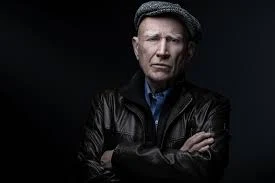Sebastião Salgado: The Lens That Captures Humanity
Introduction
Few photographers have managed to capture the raw beauty and harsh realities of our world quite like Sebastião Salgado. Known for his breathtaking black-and-white imagery and socially conscious projects, Salgado has spent decades documenting humanity’s most pressing struggles and triumphs. His work is not just photography—it’s visual storytelling with purpose.
Who is Sebastião Salgado?
Born on February 8, 1944, in Aimorés, Brazil, Sebastião Salgado began his career not behind a camera, but as an economist. However, after picking up his wife’s camera in the 1970s, his life—and the world of documentary photography—would never be the same.
Over the last 50 years, Salgado has traveled to over 120 countries, often putting himself in challenging and dangerous environments to tell the stories that matter most: poverty, displacement, climate change, and the resilience of the human spirit.
Major Photography Projects
Sebastião Salgado's work is typically grouped into long-term photographic essays that explore deep social and environmental themes. Some of his most notable projects include:
1. Workers (1993)
A monumental study of manual labor across the globe, Workers is a tribute to human industry and effort. From shipbreaking in Bangladesh to gold mining in Brazil, the images are raw and powerful.
2. Migrations (2000)
This project documents mass population movements due to war, poverty, and environmental degradation. It's a haunting portrait of the modern world in flux.
3. Genesis (2013)
Genesis is a breathtaking celebration of pristine landscapes, wildlife, and cultures untouched by modern society. It took over eight years to complete and showcases Salgado’s deep commitment to environmental conservation.
4. Amazônia (2021)
Focusing on the Amazon rainforest and its indigenous peoples, this recent project is both a celebration and a warning—highlighting the urgent need to protect Earth's lungs.
Salgado’s Style and Philosophy
Salgado’s images are instantly recognizable for their high-contrast black-and-white aesthetic, which emphasizes texture, emotion, and timelessness. He believes in immersive journalism, spending years with his subjects to build trust and capture authentic stories.
More than just an observer, Salgado sees himself as a participant—a witness to history who uses photography as a tool for empathy and change.
Awards and Recognition
Sebastião Salgado's contributions to photography and humanity have earned him numerous accolades, including:
-
UNESCO Goodwill Ambassador
-
Prince of Asturias Award for the Arts
-
Wexner Prize
-
Exhibitions in major institutions like the International Center of Photography, Tate Modern, and Musee de l'Elysee
Instituto Terra: Rebuilding Nature
Alongside his wife, Lélia Wanick Salgado, Sebastião co-founded Instituto Terra, a nonprofit focused on reforestation and environmental education in Brazil’s Atlantic Forest. They have planted over 2 million trees, transforming degraded land into a thriving ecosystem—proving that healing is possible, both for people and the planet.
Final Thoughts
Sebastião Salgado is more than a photographer—he is a humanitarian, environmentalist, and visual poet. Through his lens, we see the dignity in suffering, the beauty in resilience, and the urgency of protecting our world. His legacy will not only shape the future of photography but will continue to inspire generations to look deeper, feel stronger, and act with compassion.





.jpeg)
.jpeg)
.jpeg)
Social Plugin